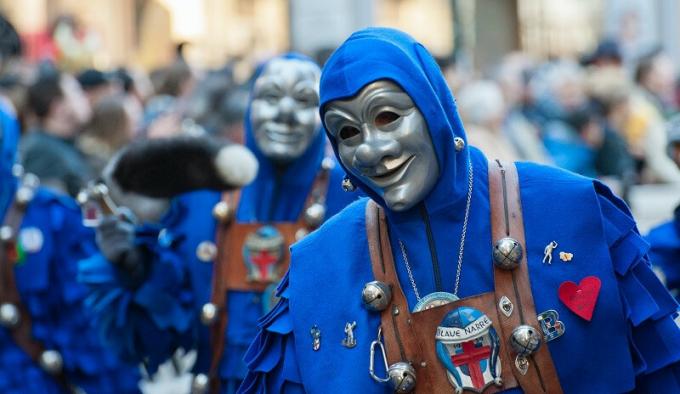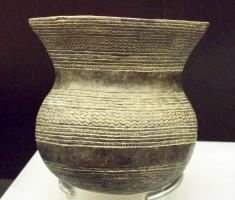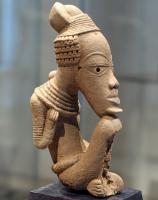What is the origin of Carnival and costumes?
Carnival is possibly one of the best known and most anticipated parties by the general public; especially for children. Indeed, if there is any party that is currently associated with children, it is Carnival. One of the main reasons is the costumes, an activity that is inextricably linked to this celebration and that is usually practiced by the little ones.
But... Do we know why we dress up in Carnival? Do we know the origin of this party? In this article we propose a journey from the origins of Carnival to the present day, through which we will better understand this unique festivity of our calendar.
- Related article: "The 8 branches of the Humanities (and what each of them studies)"
The origin of Carnival: order against chaos
As with most celebrations, Carnival has its roots in the dawn of time. Some historians see similarities between our festival and some Egyptian and Mesopotamian rituals.. In these ancient cultures (especially in Egypt), the world was seen as the victory of Order (commonly identified with Good) over Chaos (Evil).
In ancient Egypt these ideas were represented by Osiris and his brother Seth, respectively. At the end of the year, Chaos, led by Seth, threatened to loom over the earth again, and only the pharaoh (living personification of the god Osiris) was able to stop it. That is why, in the last days of the calendar, the Heb Thirst, a very important ritual in which the pharaoh purified himself and renewed his energies. If the pharaoh passed the test (it is not necessary to point out that he did, that he always passed it), chaos would move away from the earth and order would be restored, as every year.
This order-chaos dichotomy, together with the idea of "purification", is also found in two of the best-known Roman festivities: the lupercalia and the Saturnalia, which many experts place as the most immediate origin of our Carnival. Let's dwell briefly on each of them.
- You may be interested in: "Anthropology: what is it and what is the history of this scientific discipline"
The Roman Lupercalia and Saturnalia
The first point that catches our attention about this Roman festivity is its date of celebration, which fully coincides with our Carnival: February 15. We find, once again, the concept of "purification" that we already pointed out in the Heb Thirst Egyptian, since “February” comes from the Latin “februare”, which literally means “to purify oneself”.. Something similar happens with the modern Carnival, which precedes, not by chance, Lent.
The lupercalia Roman times had a very ancient origin, and their rites, which drew on the pastoral customs of the early Romans, were considered excessive by many of the respectable patricians of the Republic and the Empire. The Emperor Augustus had a frank aversion to lupercalia, and much later, in the fifth century, Pope Gelasius I was horrified by the fact that those who called themselves Christians continued to celebrating them.
What did they consist of? lupercalia And why did they arouse so many antipathies? We have already commented that the rite had its roots in the first centuries of Roman history, when the Romans were mere shepherds settled in the Lazio region. According to legend, the twins Romulus and Remus were nursed by the wolf Luperca in a cave near the city, located on the Palatine Hill.
In that same cave the rites of the lupercalia (named like that, in principle, in honor of that life-giving mother-wolf). There the lupercos, the priests of the rite, apparently chosen among the young members of the illustrious families of Rome, congregated. The main priest then immolated a goat and anointed the foreheads of the lupercos with its blood. That moment, which began the celebration, was received by the young people with a ritual laugh. we have like this another link that unites lupercalia with the “Christian” Carnival: laughter.
After this laugh, which was the starting signal, the young men left the cave and went down naked to Rome. In their hands they carried strips of skin from the recently slaughtered goat, through which, during the journey, they flogged as many women as wanted to participate in the rite, amid shouting, laughter and behaviors obscene. It seems that this lurid activity was, at the same time, a fertility and purification ritual.
On the other hand, the Saturnalia o Saturnalia was celebrated in December in honor of the god Saturn. For a whole week, the Romans celebrated the return of light (the winter solstice) with joy: they decorated their houses and gave each other gifts. Obviously, these parties are directly related to our Christmas, but they also contain elements in which the origins of Carnival can be traced. For example, the Saturnalia represented, just like the Carnival medieval, a disruption of order, a "small return from chaos", we could say: for a day, slaves were allowed to be served by their masters and the king of fools was crowned.
- Related article: "Anthropology: what is it and what is the history of this scientific discipline"
Medieval Carnival
Direct heir to the Roman tradition, these pagan celebrations survived in medieval Europe, obviously camouflaged under a cloak of Christianity. Thus, while the Saturnalia and the solstice were associated with the birth of Christ, the ancient lupercalia, the eternal struggle between order and chaos and the consequent purification process, moved to Carnival, the days immediately before Christian Lent. We are going to stop for a moment in these carnival manifestations of the Middle Ages.
Medieval thought, at least the "official" one, He did not see laughter very favorably, since it was associated with disorder and, consequently, with evil.. Let us not forget that one of the hottest theological debates of the time was whether or not Christ had laughed. As the Middle Ages progressed, scholars gradually opened up to the benefit of laughter (provided, of course, that it was controlled); however, the town had never stopped using it. Laughter and, therefore, Carnival (that moment of revelry and little chaos that preceded Lent) was popular territory par excellence. Thus, festivities related to chaos proliferate in the Middle Ages, of which the Festival of Fools and Carnival are two good examples.
Laughter is and has always been, the prelude to disorder. Let us remember that the Roman Lupercalia began with a ritual laugh. Laughter upsets the order, because it is a mockery and, through mockery, the "below" questions the "above". Not only that; through Carnival, and for a few days, all members of a community are “equal”. That is why these types of celebrations were so poorly received by the powerful; not so much for religious reasons, but rather for social and political ones.
But the medieval Carnival is not just a vehicle for détente; It is, in turn, a purification ritual, as was the Egyptian Heb Sed and the lupercalia roman. Losing inhibitions to purify oneself, throwing oneself into the arms of chaos to regain order, that seems to be the constant of all these parties that are the precedent of our modern Carnival. Already in the Saturnalia In Roman times, in its oldest form, there was the custom of appointing the least prepared individual in the community king, who was given absolute power for several days.
At the end of the celebrations, he was "sacrificed" (ritually, not physically, that is) so that he purge with his "death" the sins that the community had accumulated by separating from the order established. This tradition continued in force in the Middle Ages, not only in the figure of the Carnival King (who, in some places, still in force in the form of a puppet), but also in the aforementioned Festival of the Fools, which took place in January.
The name already gives us an idea of the purifying charge of the party. The more than likely etymology of "Carnival" is carnem levare, that is, "take off the meat, avoid the meat". Another of the original expressions, also Latin, is "carne tollere", which means exactly the same thing, and which would have given rise to the name "Carnestolendas", the nomenclature that Carnival received in the early Middle Ages and that, in fact, is still valid in places like Catalonia (where the name for Carnival is "Carnestoltes").

And the costumes???
The costumes are practically the only thing that we currently have left from a party as complex and with such a deep meaning as the medieval Carnival. The costumes, and perhaps also the laughter, since today, in many places, it is still associated with this celebration with mockery and mockery of the authorities (that is, of order). An example of this, of course, are the well-known “chirigotas” from Cádiz.
The origin of the carnival costume has to do with the desire to hide one's identity. If, as we have already said, the days of Carnival were days of disorder and mockery, the most logical thing was to be able to carry out as many misdeeds as one wanted without the danger of being discovered. That is why, more than disguises, At first, the most common thing was the use of masks. Once again, we understand why the authorities did not welcome this celebration.
Currently, Carnival has lost much of its essence. We have already seen how, from being a celebration that sought confrontation between classes, entertainment, disinhibition and the subsequent purification of the soul, has become a party linked mainly to the field childish. Maybe after reading this article you will see the Carnival with different eyes, who knows.



